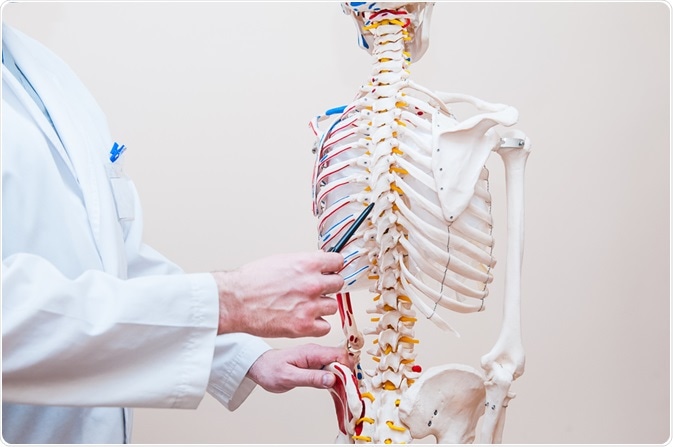Spinal cord injury (SCI) involves damage to an area of the spinal cord that might result in a loss of muscle control, movement, and sensation. Currently, patients with SCIs are managed with physical therapy, occupation therapy, and other rehabilitation methods to cope with these physical changes.
However, stem cell research may present a new approach to the management of this patient group, allowing for a potential improvement in the symptoms of the condition, such as incontinence, muscular control, and sexual function.

Image Credit: Okrasiuk / Shutterstock.com
Types of stem cells
Stem cells used in the treatment of an SCI may come from various sources, including autologous mesenchymal CD34+ cells from the patient's own bone marrow, allogeneic mesenchymal cells from the human umbilical cord tissue, or adipose tissue.
The bone marrow cells are taken from both hips of the patient, who is sedated with light general anesthetesia. The cells are then tested for quality and bacterial contamination before they can be used in the research. Likewise, cells from umbilical cords are taken from healthy infants at birth and must pass rigorous screening prior to being passed for use in trials.
Animal studies
Scientific research conducted in animals with an SCI has investigated the utility of stem cells in the repair of the injury. As a result of this research, a general understanding of the role that stem cells could play has been established. This includes:
- Replacement of necrotic nerve cells following the injury.
- Generation of supporting cells for the myelin nerve sheath and stimulate growth of damaged axons.
- Protection of nearby cells from further damage with the release of growth factors and other substances.
- Prevention of spread due to anti-inflammatory action
Clinical trials of mesenchymal stem cells
Mesenchymal stem cells, also known as stromal stem cells, are a topic of interest in the research for the treatment of SCIs. The theory is for the stem cells to provide protection to and aid in the growth of cells in the region of the injured spinal cord.
The safety and efficacy of different stem cell types have been investigated in several different studies. Various methods of administration have been trialed, including injection into the spine, the vein, or the skin.
Clinical trials of embryonic stem cells
There has also been some research focused on embryonic stem cells in the management following an SCI.
One study observed the effect of an injection of oligodendrocyte precursors to form the myelin sheath around the axons. However, after four patients were treated with the cells and observed for signs of restored nerve signaling, the study was discontinued. The belief that embryonic stem cells may be promising for an SCI was not tainted.
Another study investigated the effect of hES cell-derived oligodendrocyte progenitor cells when injected into the site of a thoracic SCI. Of five patients, none experienced serious side effects, and imaging tests revealed that the volume of injury was reduced in 80% of patients.
At this point in time, there is insufficient scientific evidence to recommend the used of stem cells for to management of an SCI. The technique is promising, however, offering the possibility of healing and the improvement of symptoms, which is in contrast to the current practice that recommends coping mechanisms without a definitive cure or improvement.
For this reason, scientific research is likely to continue in the hope of finding a suitable method to improve the quality of life for patients with spinal cord injury.
References
Further Reading